About the author
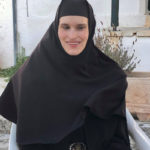
Sister Sidonia Freedman
Sr. Sidonia Freedman is a nun at the Sacred Monastery of St. Nina (Georgian Patriarchate) in the United States, with musicology and medieval studies degrees from St. Olaf College (undergraduate), and the University of Limerick (MA, PhD) where her focus turned towards Orthodox theology with a focus on Georgian polyphonic chant. Despite blindness in both eyes, Sister Sidonia is a highly accomplished lecturer, singer, choir director, and scholar, with numerous publications to her credit (see selected works at academia.edu).
Part I: Chanting Around the Throne of God
An Intermedial Study of The Trisagion Hymn
in the Georgian Tradition and in Cross-Cultural, Ritual Perspective
Part II: Musical Analysis of the Georgian Trisagion
Part III: Trisagion Hymn – East Syrian and Georgian Connections
In almost all Christian chant traditions, the Trisagion hymn has a prominent place. In contexts where it is not sung at the eucharist, such as the Roman rite, it occurs daily at the first hour, can be found in various devotions, and has an important role in Holy Week. This last usage occurs in East and West, stemming from early practice in Jerusalem (Freedman 2019, Polyphony), and it also relates to Eastern funeral and memorial rites, generally employing the same melodies.
This article will explore this common chant, its meaning and function, and its most common forms and modes of musical, iconographic, and inscribed expression, primarily within the Byzantine rite in its Georgian textual and musical embodiment, and in its theological and historical context. We will touch upon variants from other traditions, as their use relates to Georgian practice and to broader, shared Christian culture. We will consider how the various traditions compare to one another, in artistic, liturgical, and theological terms, and we will conclude with an discussion of Georgian chant in conjunction with sacred objects in their ritual setting.
Given the growing body of material, Georgian and otherwise, that is available for such cross-cultural and liturgical study, this article will focus on major services where the Trisagion hymn occurs, with salient excerpts from literature, artistic depictions, and chant examples, thus providing both snapshots and a bird’s-eye view across time, space, and art form. Most of the musical examples are in contemporary use and represent similarly-transmitted oral traditions, which, like Georgian chant, were not notated diastematically until the nineteenth century, if at all. The probable age and history of musical material will not be discussed here, but the material itself reflects early reception and interpretation of the hymn. Contextual discussion revolves around the use of iconography in Georgia, especially the symbology of the cross, Christological and Trinitarian theology, and prayerful practice as expressed in common liturgical movement, gesture, and musical shape.
It will be useful to start with the historical development and its earliest extant forms in prayers and inscriptions of the trisagion hymn (primarily based on Beck 2011), and then move to a discussion of the Georgian sources (Dolidze 2013; 2015).
The Trisagion hymn, “Holy God, holy mighty, holy immortal, have mercy on us,” is an expansion and exegesis of the thrice-holy hymn found in Isa. 6:3 and, in the same setting and with a similar interpretive expansion, Rev. 4:8. Due to the historical and theological closeness with the text of the thrice-holy, they must be discussed together. In the Trisagion, the three words added to the repetitions of “holy” are derived from Ps. 41:2 (Sept.), “My soul thirsts for God, the mighty, the living one” (in this case, “immortal” is preferred in the third position in order to match the previous adjective). The final phrase, as described by later authors, is a supplication, which is, unlike the rest of the text, understood as a human prayer, rather than worship derived from angelic hymnody (Freedman 2019, Polyphony).
According to the earliest account of this compositional process (6th century, but known from St. Photios’ 9th-century Bibliotheca, Cod. 222), a Jewish convert to Christianity taught and explained the hymn’s psalmic origin and its use as a triumphal song of Christianity over idolatry. Similar expansions of the thrice-holy occur in Jewish exegesis from about the second century B.C., and the language of all such hymns, including the Christian Trisagion, reflects biblical language against the worship of idols (Beck 2011).
Like this hymn, the beginnings of Christianity in Georgia are linked with late antique Judaism, and the prayer ascribed to St. Nino at the destruction of idols echoes the hymn text: “O God, by Thy great might throw down these enemies of Thine, and make this people wise by Thy great mercy, so that the whole nation may worship the only God through the power of Jesus Christ Thy Son, to whom belong praise and thanks for evermore” (Lang 1976, 23).
While extant only in later written sources, this prayer is not likely a later hagiographic addition and shows great affinity with other early Christian prayers (examples and discussions in Kiley et al 1997), and even more resonant is part of a speech by St. Nino’s contemporary, Emperor Constantine. In a speech, copied in the fifth century from an older source by the church historian Gelasius, he describes his work as cooperating with “the holy, immortal, unwearying mercy of Almighty God. For through me his servant God is freeing from this burden those innumerable peoples who have been enslaved for all time past and will bring them to the perfect brightness of the eternal light” (Elliott 1992, 217).
These two fourth-century texts show that the Trisagion had a marked place in the minds of Christians, being echoed in their extemporaneous words, or that such utterances were precursors of the hymn.
The earliest literary attestation of the Trisagion, as given above, is found in the minutes of the Council of Chalcedon (451), in which it is sung as a triumphal response. The other primary tradition about the origin of this hymn describes its transmission by an angel in Constantinople, and chanted in a supplicatory procession against earthquake during St. Proclus’ tenure as patriarch (434-446). the Armenian and Coptic accounts of the origin of the Trisagion at Christ’s entombment is not attested until the high Middle Ages, and it may relate to the association of this chant with funerals, to iconography of Christ’s burial, and to the attribution of later interpolations.
This story of the earthquake also concerns the correct form of the hymn’s text, which, while the controversial interpolation “who wast crucified for us” is most well-known, was expanded with various christological statements in several contexts, from Egypt to Spain, not all of which have monophysite implications, e.g. “Who was incarnate for our sakes” (for discussion and examples, see Karim 2013). However, such interpolations are problematic if the hymn is understood as being addressed to the Trinity, since any addition could be confusingly attributed to all three Persons. Thus, a major aspect of the controversy concerned whether the hymn is addressed to Christ or to the Trinity, not simply the christological implications of various statements, and while this point is still under discussion, I suggest that, in light of the Constantinian speech and Georgian sources, the addressee was not specified at first, beyond God as opposed to idols.
St. Nino’s prayer bears this out, not fitting either of the opposing views, since it is in fact addressed to God the Father through Jesus Christ, as are many early Christian prayers. Worship of these same two Persons, with the addition of the Holy Spirit, in Whom the vision took place, occurs in the thrice-holy as found in the Book of Revelation.
Another early Christian hymn, the Phos Hilaron (Georgian: Natelo mkhiarulo), dates at least as early as the mid-fourth century, and it addresses the Trinity and the Person of Christ in different sections (for a recent overview, see Kiley et al 1997). Some interpolated trisagia may have been understood to contain a similar shift.
Earlier sources, however, point to the Trinitarian understanding of the hymn. The earliest extant work against Greco-Roman paganism, St. Theophilus’ (d.185) to Autolycus, makes direct reference to the Trinity (Letter to Autolycus 2.15), and the precursor of the Trisagion, the thrice-holy was given Trinitarian significance in the same period, preceding the prayers of saints Constantine and Nino. After the initial exegesis in the Apocalypse, in the Trisagion itself, and in its Jewish predecessors, the foundational repetition of “holy” was understood as addressing and correctly theologizing the Trinity. Early interpretation of the thrice-holy in its prophetic context shows how the later Trisagion is Trinitarian without lacking christological meaning, and it illustrates how closely chant, even specific musical content, was understood to be concerned with such theological matters.
In one of the earliest commentaries on the vision of Isaiah, there is a marked christological focus, yet the author, while not seeming to respond to an argument to the contrary, explains that all three Persons of the Trinity are present wherever Christ is present in the flesh and through sacraments. This idea becomes important in regards to the cross, as we will see in later sources quoted below. The theophanic vision is associated with the Feast of the Presentation, which the author describes as a similar divine manifestation, and this theme of a revelation of the Trinity through the work of Christ, though familiar from later Byzantine hymnography for the Feast of the Theophany (Denysenko 2015), relates to many events in the life of Christ, as exemplified in this early text. Also in this passage, chanting of the thrice-holy, like the Trisagion, is contrasted with idolatrous worship.
At the beginning of his oration on Symeon and Ana, St. Methodius of Olympus (d. 311) gives the following explanation, in reference to the liturgical use of the thrice-holy in the eucharistic rite and to God’s presence, through His incarnation and in the sacraments, beginning and ending with admonitions to listen and to chant:
“And what shall I conceive, what shall I speak worthy of this day? I am struggling to reach the inaccessible, for the remembrance of this holy virgin [Mary, carrying Christ] far transcends all words of mine. Wherefore, since the greatness of the panegyric required completely puts to shame our limited powers, let us betake ourselves to that hymn which is not beyond our faculties, and boasting in our own unalterable defeat, let us join the rejoicing chorus of Christ’s flock, who are keeping holyday. And do you, my divine and saintly auditors, keep strict silence, in order that through the narrow channel of ears, as into the harbour of the understanding, the vessel freighted with truth may peacefully sail. We keep festival, not according to the vain customs of the Greek mythology; we keep a feast which brings with it no ridiculous or frenzied banqueting of the gods, but which teaches us the wondrous condescension to us men of the awful glory of Him who is God over all.”
“Come, therefore, Isaiah, most solemn of preachers and greatest of prophets, wisely unfold to the Church the mysteries of the congregation in glory, and incite our excellent guests abundantly, to satiate themselves with enduring dainties, in order that, placing the reality which we possess over against that mirror of thine, truthful prophet as thou art, thou mayest joyfully clap thine hands at the issue of thy predictions. It came to pass, he says, “in the year in which king Uzziah died, I saw the Lord sitting upon a throne, high and lifted up; and the house was full of His glory. And the seraphim stood round about him: each one had six wings. And one cried unto another, and said, Holy, holy, holy, is the Lord of hosts: the whole earth is full of His glory. And the posts of the door were moved at the voice of him that cried, and the house was filled with smoke. And I said, Woe is me! I am pricked to the heart, for I am a man of unclean lips, and I dwell in the midst of a people of unclean lips: for mine eyes have seen the King, the Lord of hosts. And one of the seraphim was sent unto me, having a live coal in his hand, which he had taken with the tongs from off the altar. And he touched my mouth, and said, Lo, this hath touched thy lips; and thine iniquity is taken away, and thy sin is purged. Also I heard the voice of the Lord, saying, Whom shall I strict, and who will go unto this people? Then said I, Here am I; send me. And He said, Go, and tell this people, Hear ye indeed, but understand not; and see ye indeed, but perceive not.” These are the proclamations made beforehand by the prophet through the Spirit. Do thou, dearly beloved, consider the force of these words. So shalt thou understand the issue of these sacramental symbols, and know both what and how great this assembling together of ourselves is. And since the prophet has before spoken of this miracle, come thou, and with the greatest ardour and exultation, and alacrity of heart, together with the keenest sagacity of thine intelligence, and therewith approach Bethlehem the renowned, and place before thy mind an image clear and distinct, comparing the prophecy with the actual issue of events. Thou wilt not stand in need of many words to come to a knowledge of the matter; only fix thine eyes on the things which are taking place there. “All things truly are plain to them that understand, and right to them that find knowledge.” For, behold, as a throne high and lifted up by the glory of Him that fashioned it, the virgin-mother is there made ready, and that most evidently for the King, the Lord of hosts. Upon this, consider the Lord now coming unto thee in sinful flesh. Upon this virginal throne, I say, worship Him who now comes to thee by this new and ever-adorable way. Look around thee with the eye of faith, and thou wilt find around Him, as by the ordinance of their courses, the royal and priestly company of the seraphim. These, as His bodyguard, are ever wont to attend the presence of their king. Whence also in this place they are not only said to hymn with their praises the divine substance of the divine unity, but also the glory to be adored by all of that one of the sacred Trinity, which now, by the appearance of God in the flesh, hath even lighted upon earth. They say: “The whole earth is full of His glory.” For we believe that, together with the Son, who was made man for oar sakes, according to the good pleasure of His will, was also present the Father, who is inseparable from Him as to His divine nature, and also the Spirit, who is of one and the same essence with Him. For, as says Paul, the interpreter of the divine oracle, “God was in Christ reconciling the world unto Himself, not imputing their trespasses unto them.” He thus shows that the Father was in the Son, because that one and the same will worked in them.”
“Do thou, therefore, O lover of this festival, when thou hast considered well the glorious mysteries of Bethlehem, which were brought to pass for thy sake, gladly join thyself to the heavenly host, which is celebrating magnificently thy salvation. As once David did before the ark, so do thou, before this virginal throne, joyfully lead the dance. Hymn with gladsome song the Lord, who is always and everywhere present, and Him who from Teman, as says the prophet, hath thought fit to appear, and that in the flesh, to the race of men. Say, with Moses, “He is my God, and I will glorify Him; my father’s God, and I will exalt Him.”
(Oration on Simeon and Anna 1-3; translated in Schaff).
In the next temporal layer of interpretation, still common to all churches, the addressee of the thrice-holy is discussed, in a more clearly polemical context and against what was considered heresy, rather than idolatry. It seems that an Arian depiction of angelic song, perhaps even Arian chant, led Christians to begin debating the nature of the addressee of the thrice-holy and the Trisagion.
In the following passage by St. Athanasios of Alexandria (d. 373), which we will visit again, it is understood that the Trinity is addressed, while Christ is nevertheless still in focus, since His divinity is proclaimed equally with that of the other two Persons.
“And how do the impious men venture to speak folly, as they ought not, being men and unable to find out how to describe even what is on the earth? But why do I say `what is on the earth?’ Let them tell us their own nature, if they can discover how to investigate their own nature? Rash they are indeed, and self-willed, not trembling to form opinions of things which angels desire to look into, who are so far above them, both in nature and in rank. For what is nearer [God] than the Cherubim or the Seraphim? And yet they, not even seeing Him, nor standing on their feet, nor even with bare, but as it were with veiled faces, offer their praises, with untiring lips doing nought else but glorify the divine and ineffable nature with the Trisagion. And nowhere has any one of the divinely speaking prophets, men specially selected for such vision, reported to us that in the first utterance of the word Holy the voice is raised aloud, while in the second it is lower, but in the third, quite low,-and that consequently the first utterance denotes lordship, the second subordination, and the third marks a yet lower degree. But away with the folly of these haters of God and senseless men. For the Triad, praised, reverenced, and adored, is one and indivisible and without degrees. It is united without confusion, just as the Monad also is distinguished without separation. For the fact of those venerable living creatures offering their praises three times, saying `Holy, Holy, Holy,’ proves that the Three Subsistences are perfect, just as in saying `Lord,’ they declare the One Essence. They then that depreciate the Only-begotten Son of God blaspheme God, defaming His perfection and accusing Him of imperfection, and render themselves liable to the severest chastisement. For he that blasphemes any one of the Subsistences shall have remission neither in this world nor in that which is to come. But God is able to open the eyes of their heart to contemplate the Sun of Righteousness, in order that coming to know Him whom they formerly set at nought, they may with unswerving piety of mind together with us glorify Him, because to Him belongs the kingdom, even to the Father, Son, and Holy Spirit, now and for ever. Amen.”
(On Luke X. 6; translated in Schaff).
 We now return to the Trisagion hymn itself, rather than the thrice-holy, and its earliest extant occurrences in Christian art. Such tangible forms of hymnography can shed light on music, and vice-versa, as we will find in our examples. The earliest appearances of the hymn, which is uninterpolated, appear on a Constantinopolitan standing marble cross (ca. 457-474) and on a sixth-century processional cross found in Syria (both are discussed in Downey 1954; the illustrations are taken from pages 277, 280.
We now return to the Trisagion hymn itself, rather than the thrice-holy, and its earliest extant occurrences in Christian art. Such tangible forms of hymnography can shed light on music, and vice-versa, as we will find in our examples. The earliest appearances of the hymn, which is uninterpolated, appear on a Constantinopolitan standing marble cross (ca. 457-474) and on a sixth-century processional cross found in Syria (both are discussed in Downey 1954; the illustrations are taken from pages 277, 280.
The nature of these inscriptions indicates how the hymn’s function, structure, and significance were understood at the time. Firstly, the Trisagion was sung during processions with the cross as early as the sixth century, and like similar hymnographic inscriptions on later Byzantine and Georgian embroideries, the text on the processional cross evoked the sound of the hymn and continued to utter it on behalf of silent, absent, and deceased donors and worshippers (Freedman 2019, Trochees).
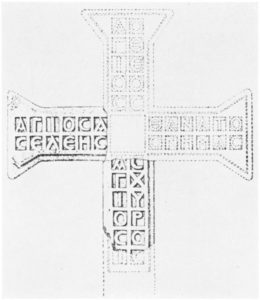 Both crosses construe the content of the hymn as cruciform, having three symmetrical phrases and a fourth with complementary proportion. The phrases are not in the same order, and the arrangement on the earlier marble cross is significant and matches the most common order of all texts inscribed on crosses (Weitzmann and Shevchenko 1963). From the spectator’s point of view, the phrases coincide with the order that one would follow if a person facing him were to make the sign of the cross in the Eastern fashion. The processional cross inscription follows the order of top, left, right, and bottom, placing the three symmetrical phrases on the three corresponding arms. These inscriptions elucidate how the Trisagion was understood as a Trinitarian hymn, yet bound up with the cross, nevertheless without any theopaschite sense.
Both crosses construe the content of the hymn as cruciform, having three symmetrical phrases and a fourth with complementary proportion. The phrases are not in the same order, and the arrangement on the earlier marble cross is significant and matches the most common order of all texts inscribed on crosses (Weitzmann and Shevchenko 1963). From the spectator’s point of view, the phrases coincide with the order that one would follow if a person facing him were to make the sign of the cross in the Eastern fashion. The processional cross inscription follows the order of top, left, right, and bottom, placing the three symmetrical phrases on the three corresponding arms. These inscriptions elucidate how the Trisagion was understood as a Trinitarian hymn, yet bound up with the cross, nevertheless without any theopaschite sense.
The cross was understood as the seal of God well before its use by the emperor Constantine, and like the Trisagion, it also had Jewish precedence in terms of use, in interpretations of the shape of the seal described in Ezek. 9:4 and of a symbol for the gate of heaven (Longenecker 2016).
As early as the second century, St. Irenaeus of Lyons (d. 202) articulates how this sign, while visibly formed by Christ, was that of the Trinity.
“And because He is Himself the Word of God Almighty, who in His invisible form pervades us universally in the whole world, and encompasses both its length and breadth and height and depth — for by God’s Word everything is disposed and administered — the Son of God was also crucified in these, imprinted in the form of a cross on the universe; for He had necessarily, in becoming visible, to bring to light the universality of His cross, in order to show openly through His visible form that activity of His: that it is He who makes bright the height, that is, what is in heaven, and holds the deep, which is in the bowels of the earth, and stretches forth and extends the length from East to West, navigating also the Northern parts and the breadth of the South, and calling in all the dispersed from all sides to the knowledge of the Father”
(Smith 1952, 70). Another translation can be accessed here.
This explanation of Christ leading all to the Father through the cross resonates with St. Nino’s prayer and with the crosses of vine and wood that had a central place in her life and work, some of which are associated with instances of chanting that were said to have a great impact (for descriptions, including those from rescensions of the Life not translated by Lang, see Wardrop 2006).
St. Irenaeus concludes the entire work with the following theological confession and warning about the seal of the cross and all that it stands for:
“So error with respect to the three articles of our seal has brought about much wandering away from the truth. For either they despise the Father, or they do not accept the Son, they speak against the dispensation of His incarnation, or they do not accept the Spirit, that is, they reject prophecy. And we must beware of all such men, and flee their ways, if we really desire to be well-pleasing to God and receive from Him salvation”
(Smith 1952, 109).
These words are echoed in St. Athanasius’ later confession, warning, and prayer for enlightenment, quoted previously, concerning the sound of the thrice-holy and its meaning. From St. Irenaeus, we find that the cross could be perceived everywhere through Christ’s work but that it must be understood in a Trinitarian context.
Another important source on this topic, and the related point about the whole Trinity’s presence at christophanies, as discussed regarding the Presentation, is St. Ephrem the Syrian’s Hymns on Faith, which are listed among St. Ekvtime the Athonite’s translations (Lang 1976, 161; see especially Hymns 7, 18, 24, and 49, translated from Syriac in Wickes 2015). Later references to the cross as a three-branched tree (cf. Anastasios of Sinai, Hexaemeron 5.3; translated in Kuehn and Baggarly 2007) reflect this same idea and correspond to the processional example and its arrangement of hymnographic phrases.
The earliest known source from any tradition that contains relevant material is the First Apology of St. Justin Martyr (d. 160) (translated in Schaff). This work contains fully-formed discussions of the form of the cross, including many of the same types in creation, such as ploughs, sails, and the human body (55); of the cross, the Trinity, and baptism (61-62); and of prayer to the Father, through the Son and the Spirit (65, 67). If this work was not known by the later authors, the striking shared images, themes, and ideas is a strong witness to cultural connections and oral tradition, not unlike the transmission of ritual actions and chant repertoires.
Regarding the cross in Georgian ritual practice and religious experience, with its pre-altar crosses and hagiographical examples of cruciform light (cf. St. Grigol Khandzteli, translated in Lang 1976, 149), the phenomenon of the “cross of light” in early Syrian contexts (Hunter-Crowley 2013) is relevant, especially given the monastic connections with Syria, which are now being explored in terms of practice and architecture (Loosley-Leeming 2018). This phenomenon includes the sign of the cross that accompanies the Trinitarian baptismal formula, also used in other sacraments and rites; carefully-constructed spoons and strainers such that they impart the sign of the cross during use; and hymn texts that indicate an understanding of a shining cross as a sign of divine glory and immanence, victory over death, and authority.
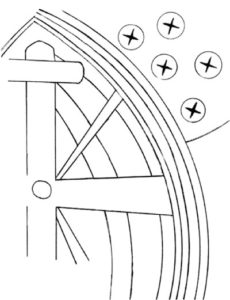
In a mural behind the altar at Udabno Monastery, an empty, luminous cross signifies the Second Coming (cf. Mt. 24:30) and also relates to the manifestation of divinity at the Transfiguration (Mirianashvili 2020). It is also accompanied by a depiction of the aforementioned theophanic presentation in the temple (the illustration is from Mirianashvili 2020, 108.
In the writings of St. Isaac the Syrian (Brock 1995), St. Germanus of Constantinople (Baranov 2015), and others, the cross–not only the true Cross but any image thereof–is described as the dwelling-place, footstool, and garment of God; cf. St. Methodius’ earlier description of the Theotokos. The crucifixion itself was also understood as a theophany, hence the accompanying earthquake, eclipse, raising of the dead, and responses of the good thief and the centurion. It was even related to the Transfiguration, beginning with reflected arrangement and forms, Christ flanked by two figures, the respective two thieves and prophets (cf. St. Anastasios of Sinai, Homily on the Transfiguration; translated in Daley 2013).
The cross was also understood as a cosmic symbol, through which Christ gathers together the creation from all directions (cf. St. Irenaeus above). While crosses signified or revealed Christ, they were not understood as icons of Him, aside from crucifixes, since such was accorded to depictions of His actual body (Baranov 2015). However, as our discussion has already shown, the cross was considered in some ways to be powerful in specific ways, and deeming it not to be an icon of Christ does not mean that it is less than an icon.
An important point of comparison is that the Eucharist is not an icon (Barber 1993). Though the cross is not Christ’s Body and Blood, it came into contact with it (cf. John of Damascus, Exact Exposition on the Orthodox Faith 4.11; translated in Schaff). It is said to be His garment and to reveal His face (Brock 1995, 58-60). Furthermore, the sense of the cross as a divine sign, throne, instrument, and powerful relic is bound up with iconicity in a more flexible way if it is not by nature an icon of the crucified Christ.
A cross could be understood as an icon of Christ’s icon (Baranov 2015), of the relic of the True Cross, and of the sign in the heavens at the eschaton. Given all the shades and modes of meaning, the cross, which may be called a “condensed christological symbol” (Baranov 2015), encompasses, or bridges perceived boundaries between, symbol, icon, and relic.
Later examples will show how Georgian art merges these three phenomena. Music similarly exploits differing senses of signification and representation, and the Trisagion, with related hymnography, is an important case study, as explored also in Part II. The existence of variegated cruciform semiology is perhaps why the cross has lent itself to all manner of iconography, decoration, and inscription in early Christian art, including Georgian pre-altar crosses and mitres (pre-altar cross photograph from Andreasen).
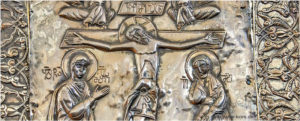 With its multifaceted meanings and its geometric utility, the form of the cross inspired various schemes and arrangements, including verbal examples. A textual and sonic example of cross decoration is the common Greek inscription “zoe” “phos” (“life” and “light”, with a shared central omega), which would have been read and heard.
With its multifaceted meanings and its geometric utility, the form of the cross inspired various schemes and arrangements, including verbal examples. A textual and sonic example of cross decoration is the common Greek inscription “zoe” “phos” (“life” and “light”, with a shared central omega), which would have been read and heard.
Our processional cross with the Trisagion has also been discussed as an expression of the “cross of light,” but without any analysis of the hymn’s content (Hunter-Crowley 2013). The hymn can, however, be understood as a cruciform sound, repeated three times, with music adding a layer of revetment or clearly defining the shape, depending on the characteristics of any given variant. We have seen how the text and the form of the cross were applied to each other, and the structure of the two above inscriptions is reflected in the most common musical settings, across traditions but especially in Georgia, with general symmetry in the first three phrases and a conclusion.
While I have not encountered inscriptions of the Trisagion on Georgian crosses, the thrice-holy appears with the seraphim on icons and epitaphioi (we will see an example of the latter in Part II). Most notably, such depictions of angels occur on late Medieval mitres, on the crown, which symbolizes the heavens, with seraphim and other figures around a central cross, which signifies God seated on His throne (Berelashvili 2012). We will begin to explore the sonic variants that form and encircle the cross in the second part of this article, focusing on their liturgical context, along with inscribed thrice-holy texts, Trisagia, and crosses in their musical and ritual context.
Given all the accounts and extant versions of the Trisagion, and its presence in early Syrian, Constantinopolitan, and Georgian historical and hagiographical texts, it is likely that the Trisagion was an existing popular processional hymn and form of supplication, which became a part of the eucharistic liturgy and most services by the first half of the fifth century. Its processional character will be a focal point for our examples, along with exegesis of the text.
Trinitarian theology, christology within the same, and the earlier exegetical traditions on divine attributes or names with the thrice-holy coexist and do not present alternative or conflicting meanings (cf. patristic biblical exegesis). It is the musical forms of this hymn, especially the wide variety of Georgian compositions, that can bring the complementary threads of meaning to light, providing sonic exegesis, supported by patristic writings, iconography, Liturgy, monastic piety, and lay ritual.
* * * * * * * * * * * * * * * * * * * * * * * * * * * * * *
Acknowledgements:
Sister Sidonia Freedman gratefully acknowledges the help and support of her community, and of many colleagues for inspirational discussion and technical assistance on this article including Bruce Beck, Emma Loosley-Leeming, Levan Bitarovi, and John Graham.
Bibliography
Aleksidze, Zaza. “The Visions of Grigor and Sahak Part’ew: Old Georgian Versions and Their Reflection in Georgian Sources.” in The Armenian Apocalyptic Tradition: A Comparative Perspective. Kevork B. Bardakjian and Sergio la Port, eds. (Leiden: Brill Academic Publishers, 2014): 326-340.
Alföldi, Andrew and Erica Cruikshank. “A Sassanian Silver Phalera at Dumbarton Oaks.” Dumbarton Oaks Papers 11 (1957): 237-245.
Andreasen, Nora Mikeladze. Pre-Altar Crosses in Georgia Accessed October 16, 2020. http://www.georgiske-kors.dk.
Arnold, Clinton. The Colossian Syncretism: The Interface Between Christianity and Folk Belief at Colossae (Eugene, OR: Wipf and Stock Publishers, 2014).
Arom, Simha, Frank Scherbaum, and Florent Caron Darras. “Structural Analysis and Modeling of Georgian and Medieval Polyphonies.” 2018. accessed October 16, 2020. https://www.uni-potsdam.de/de/soundscapelab/about-seismosoundscape-lab/people/frank-scherbaum/.
Bacci, Michele. “Echoes of Golgotha: The Iconization of Monumental Crosses in Medieval Svanet’i.” in The Medieval South Caucasus: Artistic Cultures of Albania, Armenia, and Georgia. Ivan Foletti and Erik Thunø, Eds. (Turnhout: Brepols Publishers, 2016): 206-225.
Baranov, Vladimir A. “Instrument of Death and Tree of Life: Visual Meanings of the Cross in Some Late Antique and Byzantine Monumental Programs.” Scrinium 11 (2015): 22-48.
————. “Unedited Slavonic Version of the Apology on the Cross and on the Holy Icons Attributed to Patriarch Germanus of Constantinople (CPG 8033).” Scrinium 2 (2006): 7-40.
Baratashvili, Gulnaz and Eka Berelashvili. “Iconographic Peculiarities of the Aer of Princess Tamara.” Accessed October 16, 2020. https://www.academia.edu/33388520/Aer_of_Princes_Tamara.
Barber, Charles. “From Transformation to Desire: Art and Worship after Iconoclasm.” The Art Bulletin 75 (1993): 7-16.
Beck, Bruce. “‘When Shall I Come and See the Face of God?’: The Exegetical and Historical Genesis of the Trisagion Hymn.” Greek Orthodox Theological Review 56 (2011): 347-375.
Berelashvili, Eka. “Some Artistic Aspects of Late Medieval Georgian Mitres.” Kadmos 4 (2012): 7-36.
Bollók, Adam. “Apotropaion and Burial in Early Byzantium: Some Preliminary Considerations.” in Byzanz und das Abendland: Begegnungen zwischen Ost und West (Budapest: Eötvös József Collegium, 2013): 227-241.
Brock, Sebastian P., Trans. Isaac of Nineveh (Isaac the Syrian), The Second Part, Chapters IV-XLI (Louvain: Peeters Publishers, 1995).
—————. The Syriac Fathers on Prayer and the Spiritual Life (Kalamazoo, MI: Cistercian Publications, 1987).
Cattoi, Thomas. “Liturgy as Cosmic Transformation.” in The Oxford Handbook of Maximus the Confessor. Pauline Allen and Bronwen Neil, Eds. (Oxford: Oxford University Press, 2015).
Cotsonis, John A. The Religious Figural Imagery of Byzantine Lead Seals I: Studies on the Image of Christ, the Virgin and Narrative Scenes (New York: Routlege, 2020).
—————. The Religious Figural Imagery on Byzantine Lead Seals II: Studies on Images of the Saints and on Personal Piety :New York: Routledge, 2020).
Daley, Brian E. Light on the Mountain: Greek Patristic and Byzantine Homilies on the Transfiguration of the Lord (Crestwood, NY: St. Vladimir’s Seminary Press, 2013).
Decker, Anne Marie. “Medieval Nubian Nalbinding in Sudan.” Nalbound. accessed October 16, 2020. https://nalbound.com/2020/01/02/medieval-nubian-nalbinding-in-sudan/..
Djobadze, Wachtang Z. “Notes on Georgian Minor Art of the Post-Byzantine Period.” The Journal of the Walters Art Gallery 23 (1960): 97-117.
Dolidze, Tina. “Overview of the Georgian Research into Byzantine and Medieval Georgian Patristic Theology.” Phasis 15-16 (2013): 397-426.
————-. “Patristics–As Reflected in Georgian Spiritual and Intellectual History.” in Patristic Studies in the Twenty-First Century: Proceedings of an International Conference to Mark the 50th Anniversary of the International Association of Patristic Studies. Bruria Bitton-Ashkelony, Theodore de Bruyn, and Carol Harrison, Eds. (Turnhout: Brepols Publishers, 2015): 497-519.
Downey, Glanville. “A Processional Cross.” The Metropolitan Museum of Art Bulletin 12 (1954): 276-280.
Elliott, Thomas George. “Constantine’s Explanation of His Career.” Byzantion 62 (1992): 212-234.
Freedman, Novice Nicoletta. “‘Everything is to Glorify Christ’: Liturgical Creation in Svan Religious Folk Song and Practice.” in Proceedings of the Sixth Conference of the International Society for Orthodox Church Music. Ivan Moody and Maria Takala-Roszcenko, Eds. (Joensuu: Joensuu Theological Centre, 2017): 369-389.
Freedman, Nun Sidonia. “Polyphony and Poikilia: Theology and Aesthetics in the Exegesis of Tradition in Georgian Chant.” Religions 10 (2019): 402.
———————. “Trochees, Textiles, and Triptychs: Theology, Patterns, and Synergy in Music and Liturgy.” in Proceedings of the Seventh Conference of the International Society for Orthodox Church Music. Ivan Moody and Maria Takala-Roszcenko, Eds. (Joensuu: Joensuu Theological Centre, 2019).
Gagoshidze, Giorgi. “Jerusalem in Medieval Georgian Art.” in Visual Constructs of Jerusalem. Bianca Kühnel, Galit Noga-Banai, and Hanna Vorholt, Eds. (Turnhout: Brepols Publishers, 2014): 133-138.
——————. “Katskhi Pillar.” Collectanea Christiana Orientalia 12 (2015): 287–306.
Gigineishvili, Levan. “Ioane Petritsi’s Preface to His Annotated Translation of the Book of Psalms.” in Georgian Christian Thought and Its Cultural Context. Tamar Nutsubidze, Cornelia B. Horn, and Basil Lourié, Eds. (Leiden: Brill Academic Publishers, 2014): 194–235.
Griffith, Sidney H. Trans. A Treatise on the Veneration of the Holy Icons Written in Arabic by Theodore Abū Qurrah (Louvain: Peeters Publishers, 1997).
Herrmann, John and Annewies van den Hoek. “Apocalyptic Themes in the Minor and Monumental Art of Early Christianity.” in Pottery, Pavements, and Paradise: Iconographic and Textual Studies on Late Antiquity (Leiden: Brill Academic Publishers, 2013): 327-382.
Hunter-Crowley, Heather. “The Cross of Light: Experiencing Divine Presence in Byzantine Syria.” in Experiencing Byzantium: Papers from the 44th Spring Symposium of Byzantine Studies. Claire Nesbitt and Mark Jackson, Eds. (New York: Routledge, 2016): 191-210.
Janeras, Sebastià. “Le Trisagion: Une Formule Brève en Liturgie Comparée.” Orientalia Christiana Analecta 265 (2001): 495-562.
Karim, Armin. “The Meaning of the Trisagion in East and West.” in Chant and Culture: Proceedings of the Conference of the Gregorian Institute of Canada, August 6-9, 2013. Armin Karim and Barbara Swanson, Eds. (Lions Bay, BC: Institute of Mediaeval Music, 2014): 23-39.
Kiley, Mark et al. Prayer from Alexander to Constantine: A Critical Anthology (New York: Routledge, 1997).
Kuehn, Clement A. and John E. Baggarly, Eds and Trans. Anastasius of Sinai: Hexaemeron. Orientalia Christiana Analecta 278 (2007).
Lang, David M. Lives and Legends of the Georgian Saints (London: Mowbrays Publishers, 1976).
Longenecker, Bruce W. The Cross Before Constantine: The Early Life of a Christian Symbol (Minneapolis, MN: Augsburg Fortress Publishers, 2015).
Loosley-Leeming, Emma. Architecture and Asceticism: Cultural Interaction Between Syria and Georgia in Late Antiquity (Leiden: Brill Academic Publishers, 2018).
Louth, Andrew, Trans. St. John of Damascus: Three Treatises on the Divine Images (Crestwood, NY: St. Vladimir’s Seminary Press, 2003).
McAvoy, Shawn. Evolution of an Eschaton: An Analysis of On the Antichrist (CPG 3496) Attributed to Efrem the Syrian. Ph.D. Diss., Arizona State University, 2019.
McCollum, Adam. “Syro-Georgian Trisagion.” hmmlorientalia. Accessed October 16, 2020. http://hmmlorientalia.wordpress. com/2013/10/24/syrogeorgian-trisagion/.
Mengozzi, Alessandro and Luca B. Ricossa. “Folk Spontaneity and Pseudo-Teretismata in East-Syriac Soghiyāthā: Resurrection, Joseph and His Mistress, ‘Tell me Church!’, Moses and Jesus, and Great Rome.” in Христианский Восток 6 (2013): 162-180.
Mirianashvili, Lado. “Theological Content of a Mural in a Church of the
Tetri Udabno Monastery of Gareji.” in Davit Gareji–Multidisciplinary Study and Development Strategy (Tbilisi: 2020): 108-113.
Olkinuora, Fr. Damaskinos. “Singing of Divine Identities in a Liturgical Space: John Damascene’s Treatise on the Trisagion and His Anti-heretical Polemics.” Approaching Religions 8 (218w: 17-26.
Pataridze, Tamara. “Christian Literature in Arabic in the Early Islamic Period (8th-10th C.): The Circulation of Texts and Ideas Between the Greek, Syriac, Arabic, and Georgian Communities.” Le Muséon 132 (2019): 199-222.
—————–. “La Version Géorgienne d’une Homélie de Jaques de Saroug Sur la Nativité. Étude et Traduction.” Le Muséon 121 (2008): 373-402.
Prentice, William K. “Magical Formulae on Lintels of the Christian Period in Syria.” American Journal of Archaeology 10 (1906): 137-150.
Pritula, Anton. “A Hymn on Tiflis from Wardā Collection: A Transformation of the Muslim Conquerors into Pagans.” in Caucasus During the Mongol Period–Der Kaukasus in der Mongolenzeit. Jürgen Tubach, Sophia Vashalomidze, and Manfred Zimmer, Eds. (Wiesbaden: Reichert Verlag, 2012). 217-237.
Rush, Alfred C. “Death as a Spiritual Marriage: Individual and Ecclesial Eschatology.” Vigiliae Christianae 26 (1972): 81-101.
Schaff, Philip, Ed. Early Church Fathers. Christian Classics Ethereal Library. Accessed October 16, 2020. https://www.ccel.org/fathers.html.
Shughliashvili, Davit. “Shesvladi (Introit) in Georgian Ecclesiastical Chanting.” in Proceedings of the Third International Symposium on Traditional Polyphony. Rusudan Tsurtsumia and Joseph Jordania, Eds. (Tbilisi: Tbilisi State Conservatoire, 2007): 475-484.
Skhirtladze, Zaza. “The Oldest Murals at Oshki Church: Byzantine Church Decoration and Georgian Art.” Eastern Christian Art 7 (2011): 97-134.
Smith, Joseph P., Trans. St. Irenaeus: Proof of the Apostolic Preaching (London: Newman Press, 1952).
Steenberge, Laura. “We Who Musically Represent the Cherubim.” in Aural Architecture in Byzantium: Music, Acoustics, and Ritual. Bissera Pentcheva, Ed. (New York: Routledge, 2017): 143-162.
Stewart, Columba. “The Practices of Monastic Prayer: Origins, Evolution, and Tensions.” in Living for Eternity: The White Monastery and its Neighborhood. Proceedings of a Symposium at the University of Minnesota, Minneapolis, March 6-9, 2003. Philip Sellew, Ed. (2003): 97-108.
Touliatos, Diane. “Nonsense syllables in the music of the ancient Greek and Byzantine traditions.” Journal of Musicology 7 (1989): 231-243.
Turner, Charles. “Proportion and Form in the Continental Isorhythmic Motet c. 1385-1450.” Music Analysis 10 (1991): 89-124.
Wanek, Nina-Maria. “The Greek and Latin Cherubikon.” Plainsong & Medieval Music 26 (2017): 95-114.
Weitzmann, Kurt, and Ihor Ševčenko. “The Moses Cross at Sinai.” Dumbarton Oaks Papers 17 (1963): 385-398.
Wickes, Jeffrey T., Trans. St. Ephrem the Syrian: The Hymns on Faith (Washington, D.C.: Catholic University of America Press, 2015).
Wilson, Roger J. A. “An Unusual Early Byzantine ‘Thrice-Holy’ Inscription and Accompanying Design from Punta Secca, Sicily.” Phoenix 67 (2013): 163-181.
Wardrop, Marjory, Trans. Life of St. Nino (Piscataway, NJ: Gorgias Press, 2006).
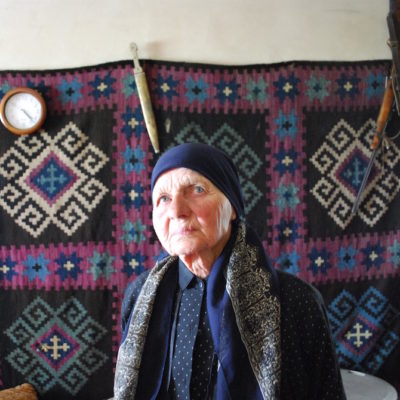

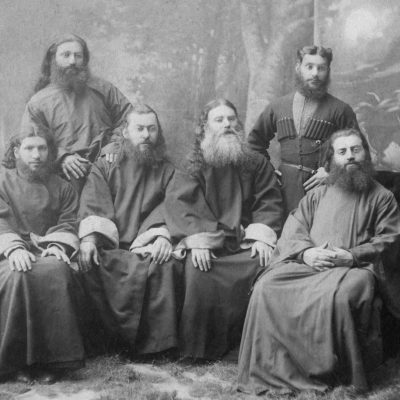
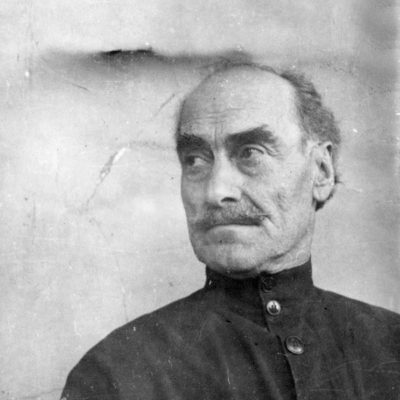

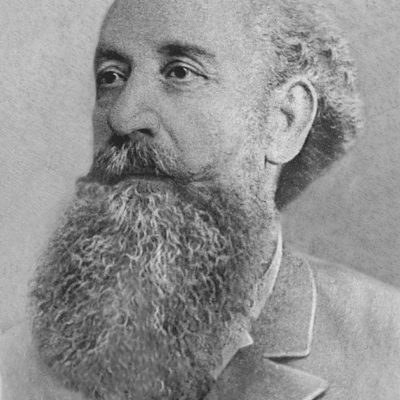
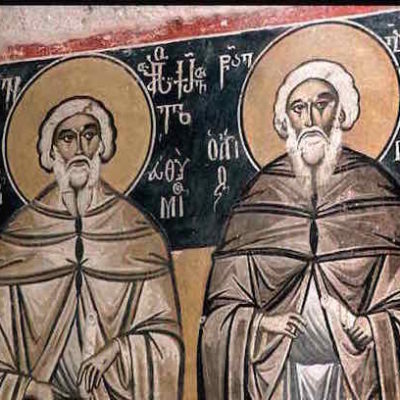
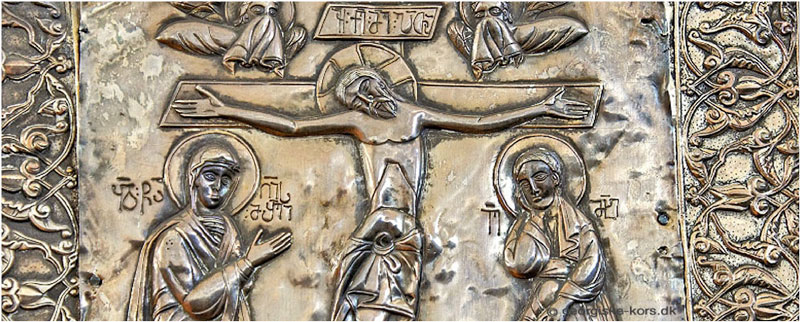
Leave a Reply